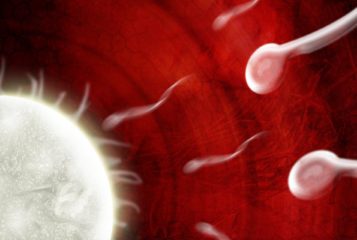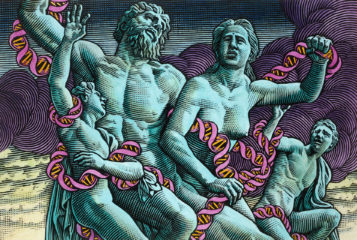Professor Lisa Jardine, the chair of the UK's Human Fertilisation and Embryology Authority (HFEA), has called for a fresh debate on two allegedly controversial aspects of gamete donation, namely the provision of gametes to a known relative of a different generation, and the provision of semen by a man to his sister if she is using a donated egg. These scenarios involving personal donors have similarities: in both of them the donor has a pre-existing social role in respect of the recipient, such as father-in-law, mother, brother... In both cases they would acquire in addition a biological role in respect of any donor-conceived child. For various reasons some people find this problematic, if not actually primitive and unethical (1). Reasons given for wanting to discourage such donations include a fear that the offspring would be confused as to what their relationship is to the donor and that the unusual mixing of social and biological roles is wrong in itself.
Why should offspring be confused and in any case what do we mean by intergenerational? Perhaps in a society of small families with two or three closely spaced children it has been possible to demarcate the generations into neat categories, but where children's ages span sixteen or more years this is not always so. Remarriages also can lead to 'mismatch' of generations and age. We do not regulate or prevent this in our society: it is up to normal human ingenuity to manage the implications including being truthful with children about the social and biological connections. Far from being confused, children seem to relish working out family trees. It is the adults who get confused. Regulated infertility treatment may require clarity but this is in tension with the intrinsic ambivalence of everyday life (2).
In the situation of donated semen, there is also the long-standing concern about the sexual nature of the gift, because whereas in egg donation it is a woman who provides (or sells, directly or indirectly) something for another woman, it seems that in semen donation the male provider also gives to the woman, not to the woman's male partner if she has one. Concern about sex is compounded by concern that such interfamilial donations are incestuous because they transgress particular beliefs about family relationships. Obviously these beliefs are not universally held, including in the UK (3), but one of the characteristics of donor-assisted conception historically in the UK has been the effort clinically and legally to keep people apart. Partly this has been because of ideas that there may be risks if donors were to meet parents and donor offspring. Mainly it is because of the way in which parenthood is conceptualised. English law in particular tends to treat a social father 'as if' he is the biological father also. Social parenthood is seen as fragile and temporary in comparison to the strong connection formed by biology. The solution to this fear of the strength of biological ties is to try to deny the existence of the tie, or to make it very difficult to access. A good example is the recent suggestion by policy makers to revert adoption law in England so that adopted people would once again not have the right to obtain identifying information about their birth parents. The suggestion shocked many individuals and agencies with personal and professional involvement in adoption. It was not based on evidence but on beliefs about what parenthood should look like.
These beliefs about parenting are not necessarily wrong but strike others as odd. They are probably not supportive to the efforts of kinspeople to help their childless relatives, nor to the brother who would be an uncle as well as biological father in order to help his sister. Therefore it is important for policy makers and others involved in providing and regulating infertility treatment to be clear that some social actions are not necessarily problematic or unethical, they just don't fit with a culturally-specific way of thinking about parenthood.
Sources and References
-
1) Simpson, R., ‘Localising a Brave New World: New Reproductive Technologies and the Politics of Fertility in contemporary Sri Lanka' in Reproductive Agency, Medicine and the State, Maya Unnithan-Kumar (ed), (2004) New York and Oxford: Berghahn Books
-
2) Jones, C., in report of ESRC Genomics Network: Genomics and Identity Politics Workshop February 2009, available at http://www.genomicsnetwork.ac.uk/media/EGNReport_final.doc
-
3) Speirs J.M., ‘Secretly connected? Anonymous semen donation, genetics and meanings of kinship' (2007) Unpublished doctoral thesis, University of Edinburgh





Leave a Reply
You must be logged in to post a comment.